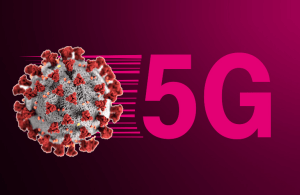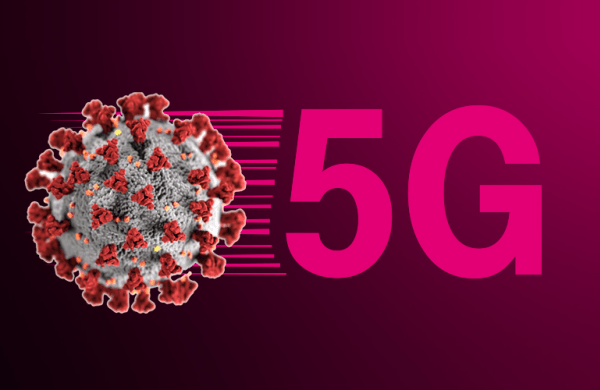Fact or fiction: Debunking some of the biggest myths, rumors and lies surrounding 5G
Fact or fiction: Debunking some of the biggest myths, rumors and lies surrounding 5G
By Samantha Cossick
08/04/20
Connecting your phone to the cellular network is something most people don’t give much thought. The choice of 3G vs. 4G vs. LTE is usually done by your carrier. But there is a new kid on the block that is making people suddenly interested in networks — 5G. However, along with a huge amount of attention for its super-fast speeds has come a torrent of misinformation and rumors about what it can and can’t do. It’s gotten people asking, what are the dangers of 5G?
Interest in 5G and the accompanying search trends have continued to grow since 2018. Verizon was the first to start rolling out a 5G network in October 2018 and since then we’ve seen AT&T, Sprint and T-Mobile start rolling out their own networks, albeit in limited areas so far.
So, what’s true, what’s false and what is just patently concocted? We break down the myths, rumors and lies surrounding 5G.
Wait, what is 5G again?
Before considering any possible dangers of 5G, let’s do a quick primer: 5G or fifth-generation cellular wireless is a form of mobile communication and technical ground rules that outline how the network operates. It’s the latest iteration of mobile communication, building on the current 4G and LTE networks that are standard. The new 5G networks are powered by a brand new technology referred to as millimeter wave, or mmWave.
5G networks promise faster connections with reduced latency and a higher data rate. Devices on the network will be able to work en masse in large crowds and transfer information in a fraction of the time — you could download a two-hour movie in 3.6 seconds on a 5G network vs. 6 minutes on a 4G network.
Fact or fiction: I’ll need a new phone once 5G networks roll out
Fact (kind of)
Since 5G networks are building on top of rather than replacing the existing 4G and 4G LTE networks, you won’t need a new phone — in theory. All existing phones will still be able to connect to 4G networks and operate just fine. They’ll even be able to connect to 5G networks and may see a slight boost in speed.
But to truly take advantage of all that 5G has to offer, you’ll need a 5G-compatible phone and only a few manufacturers, including Samsung, offer these currently. Most other major phone manufacturers are expected to release 5G phones in 2020. In fact, Apple alone is gearing up to ship at least 80 million 5G-compatible phones next year, which many think will be the tipping point for the technology.
Fact or fiction: 5G frequencies are going to microwave our brains
Fiction
As with any new technology, there are always worries about the health side effects (remember the panic around cellphones causing cancer?). And it’s good to be concerned about our health, but erroneous data can lead to unnecessary panic. As is the case with a 2000 graph by physicist Dr. Bill P. Curry that showed an extremely steep increase in microwave absorption by the brain at higher frequencies leading to fears of 5G health risks.
Since then, multiple scientists have debunked this myth on the dangers of 5G stating that 1) Dr. Curry’s data looked at exposed tissues in a lab, not cells deep inside our body and 2) it failed to take the “shielding effect” into account. The shielding effect refers to our skin’s ability to block out higher radio frequencies and protect our insides.
Fact or fiction: 5G frequencies are going to take weather predictions back to the 1980s
Unclear
Ok, not a great answer, we know, but there’s really not enough data to determine what the effects of 5G networks will be on weather-pattern data collection. Many meteorologists though have expressed concerns that 5G networks will interfere with the satellite data they rely on to make accurate weather predictions and warn people about potentially hazardous situations, such as hurricanes, tornadoes and more.
However, we don’t know this for sure. Carriers have only made 5G networks available in a handful of cities (about 35 cities have access) and there are no 5G compatible phones available to truly take advantage of that network. Federal Communications Commission Chairman Ajit Pai has said he’s not worried about it affecting satellite data, though.
Fact or fiction: We need 5G technology to keep up with the rapidly developing world
Fact
The United States is actually already a little behind when it comes to 5G technology. South Korea has had established 5G networks since Dec. 2018, three carriers in China launched 5G in Oct. 2019, four providers rolled out 5G networks throughout 2019 in the United Kingdom and 20 cities in Germany got 5G this year as well. Another 65 countries are currently developing the technology with many hoping to roll out the network in 2020.
President Donald Trump has stated many times that 5G technology must be a priority for the United States. In April he said: “Secure 5G networks will absolutely be a vital link to America’s prosperity and national security in the 21st century.”
“5G will be as much as 100 times faster than the current 4G cellular networks. It will transform the way our citizens work, learn, communicate and travel. It will make American farms more productive, American manufacturing more competitive and American healthcare better and more accessible. Basically, it covers almost everything, when you get right down to it. Pretty amazing,” he continued.
Fact or fiction: I’ll be able to use a 5G network as soon as I get a 5G phone
Depends
If you live in one of the 35 cities where 5G networks currently exist or one of the other cities where the technology is expected to come in 2020, then, yes, you’ll be able to take full advantage of a 5G network as soon as you get a 5G-compatible phone.
If you’re not in one of those markets, though, you may have to wait. While most carriers have expressed interest in rapid rollouts in 2020, it may still take a few years for the network to truly cover the majority of the United States. For instance, Verizon first started rolling out 4G LTE in 2010 but didn’t replace its entire 3G network until the end of 2013.












